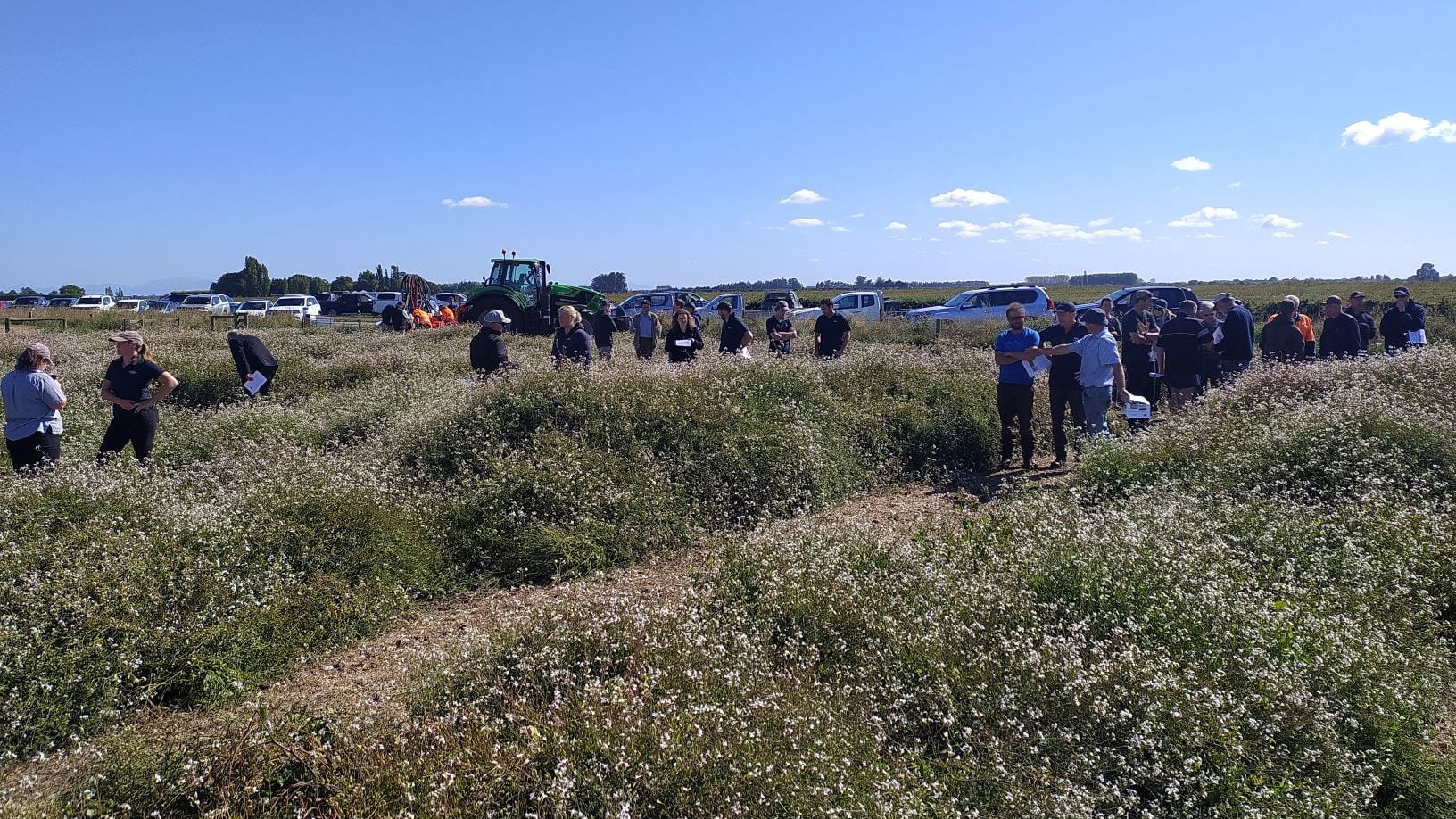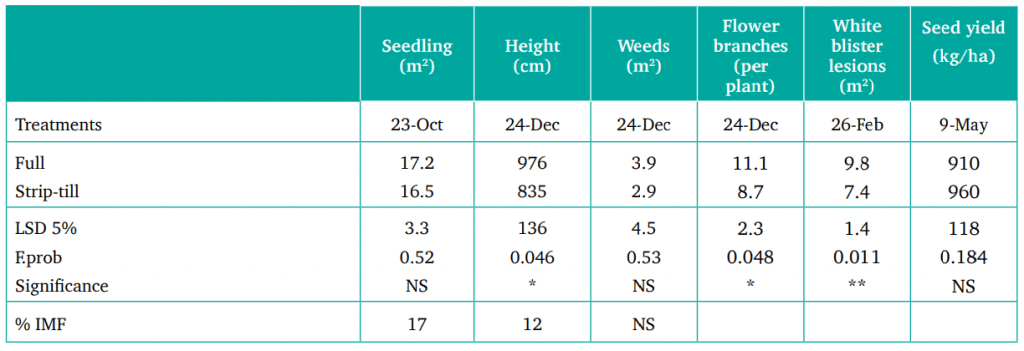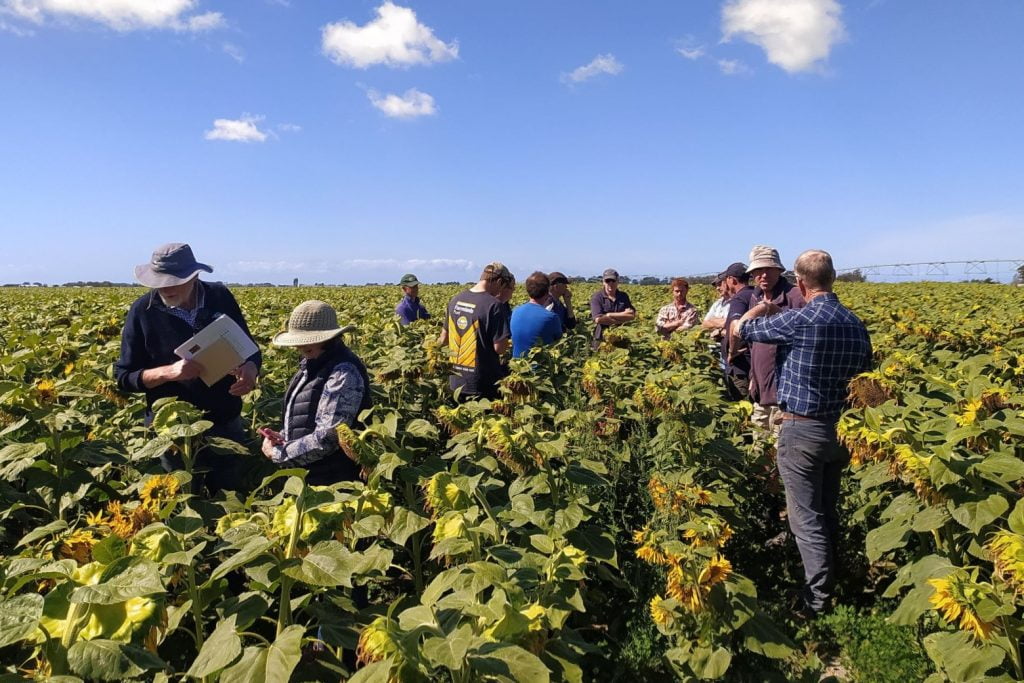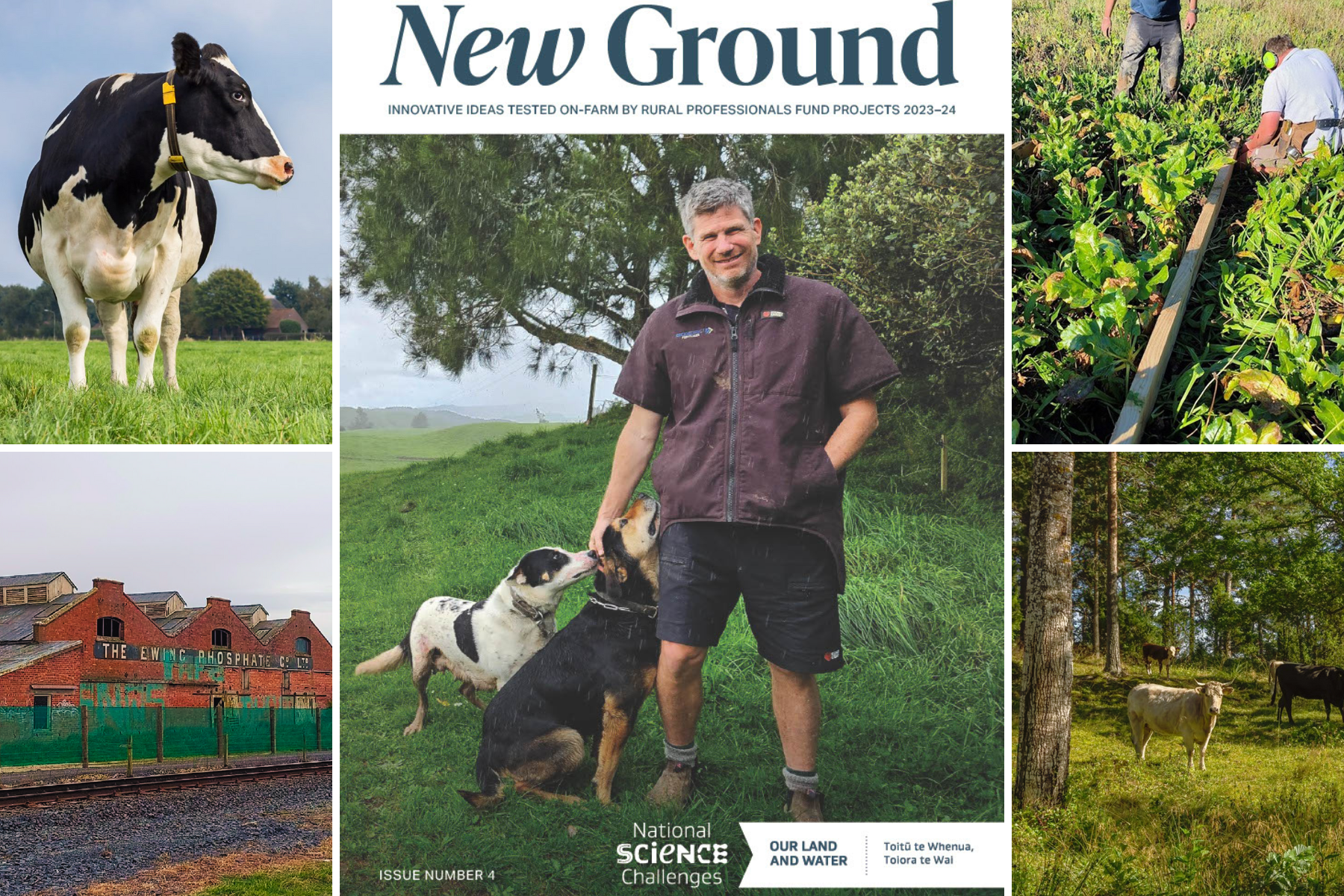Seeds of Change
The benefits of reduced tillage to combat soil degradation are well known internationally. Strip-till is widely used in New Zealand for commercial maize crops, but little is known about how effective it could be for hybrid vegetable seed crops
It is common to see stock grazing on cropping paddocks over the colder months around Canterbury.
Generally, it’s dairy farmers making the most of the pasture or other cover crops like oats, prior to calving. Sheep are also common, coming off the dry hills, particularly around Banks Peninsula when there’s not much feed for them, and over-wintering on the flats. It is a system that benefits everyone.
On David Birkett’s cropping farm near Leeston you’ll only see sheep. Cattle are heavy and more likely to damage the soil structure, David says. This is part of his overall farming strategy of low soil impacts and low inputs on his cropping land.
David is the third generation to grow crops on this family farm above Lake Ellesmere. He was one of the first farmers to get into vegetable seed production 20 years ago, and now grows around 10 different crops in rotation (mostly for seed) each year including wheat, barley, ryegrasses, clovers, beans, peas and radish.
David’s family has owned this farm for 90 years, and it was previously cropped by its original European settlers in the 1880s. This amounts to 140 years of routinely disturbed earth.
His interest in growing vegetables like radish using lower soil impact strip-till led him to join in research with Richard Chynoweth of the Foundation for Arable Research (FAR) and John Hampton from Lincoln University for this Our Land and Water Rural Professionals Fund project.
Cultivation in Canterbury
Canterbury is one of the biggest seed multiplying areas globally, with about one-third of the world’s white clover seed, one-third of all ryegrass seed, and about one-third of all radish and carrot seed coming off the plains, says Richard.
“Most of the seed comes from the Northern Hemisphere in their off-season and is sown in Canterbury. When the resulting seed crop is harvested, it is sent back again. This can see 1 kg of grass seed sown produce 2,000 kg of new seed,” says Richard. “Around 200 different cultivars of ryegrass are grown here, far more than the number available for our own pasture. New Zealand growers also produce vegetable seed from about 100 different species.”
David’s family has owned this farm for 90 years, and it was previously cropped by its original European settlers in the 1880s. This amounts to 140 years of routinely disturbed earth.
Full cultivation is still common. This prepares the soil for the fine seed bed that many arable crops need, but it can be very aggressive. The top 15 cm of soil can be torn and turned using a plough, discs and rippers. Not only does it damage soil structure, but the soil is also more prone to erosion from wind and water run-off.
Less invasive strip-till is still relatively new on the cropping scene in New Zealand, with adoption in Canterbury beginning over the last few years. Strip-tilling creates a narrow, cultivated strip into which the seed is sown, leaving the rest of the area uncultivated. The aim is to create a favourable seed-bed within the strip only, similar to that achieved by conventional cultivation. It is widely used for crops like maize but there is little research on how useful such cultivation could be for vegetable seed crops.
There are some real benefits to moving away from full cultivation where possible, Richard says. Organic matter breaks down quickly when exposed to oxygen and water, and the microbes get going. Direct drilling and strip-tilling delay breakdown and nutrient release, and delay the breakdown of material between the rows, giving a steady stream of nutrients over time.

The strip-till vs conventional till process
Sheep had been grazing on one of David’s paddocks planted up with oats over winter, leaving a layer of plant material covering the soil. After spraying off the oats with glyphosate in mid-August, fertiliser was then broadcast and worked in by cultivation on the main paddock, and strip-tilled in the trial rows.
The seed being used was to produce a hybrid European round radish, which sees pollen produced by the male parent plants (SPS11030M) received by the female parent plants (PS11030FM). Across the paddock are sets of six female rows separated by two male rows with 50 cm between the rows.
One set of eight rows used conventional tillage, while the other set of eight rows used strip-till. This was repeated four times in the paddock.
Strip-tilling creates a narrow, cultivated strip into which the seed is sown, leaving the rest of the area uncultivated.
The cultivated rows got the full treatment: disced, Maxi-tilled for pre-emergence herbicide Treflan, then base fertiliser applied and disced in, and ‘Cambridge rolled’ before planting.
The strip-tillage rows had a specialised Kverneland Kultistrip machine, which has changeable row spacing of 45–80 cm with cultivation depth able to be altered between 10–30 cm, and is a popular choice. So too is the multi-role tillage and Mzuri seed drill. The first strip-till pass was in early September, and another pass 10 days later before being ‘Cambridge rolled’ before drilling. Treflan was applied at the same time as the full cultivation rows but not incorporated.
Drilling used the same precision planter for both treatments, targeting nine seeds/m of drill row with standard crop management over all the rows for the growing season.
A count was taken of the numbers of radish seedlings that had established after about five weeks, along with weed counts, the height of the canopy and number of flowering branches per plant at Christmas time (see Table 1).

Neutron probes were put in each row measuring soil moisture at depths down to 60 cm in late November for weekly readings from five depths (see Table 2).
The amount of white blister disease (Albugo candida) in the crop was also assessed in late February before the crop was desiccated in early April, with the seed harvested a month later with a Case IH, ‘Axial Flow’ combine.

How it went
Seedling establishment did not differ, although the strip-till radish got off to a slower start. This was likely due to the soil being slightly cooler to start with, from crop residue covering much of it. The maximum moisture deficits between the two establishment practices were not significantly different. There was no difference in the spectrum of weeds between the strip and the conventional cultivation. White blister disease was lower in the strip-till rows.
There was no difference in radish seed yield.

Along with a thumbs up from David, Owen Gibson of FAR also surveyed other Canterbury farmers who had previously used strip-till. They highlighted the following benefits:
- provides a fine seed bed tilth within the rows without disturbing the entire paddock
- soil erosion is greatly reduced
- soil strength and health are improved, and more soil moisture retained
- increased ability to graze livestock in the winter increases profitability of the system
- can cultivate into existing grass/forage crop without the more invasive cultivation techniques needed to prepare a conventional seed bed.
Next steps
The trial has confirmed a change for the future for David. Not only can he protect his soil structure more with lower impact strip-till, but he will also produce fewer emissions and save money.
The tractor the contractor had used for the strip-till rows has a 100 hp engine compared to David’s usual 180 hp tractor, so less eCO2 emissions. With just two passes for the strip-till he also saved on another pass needed for the conventional crop.
On top of that there would likely be less of a weed burden in the non-cultivated parts of the paddock, so this means fewer additional passes with herbicide applications on a strip-tilled paddock.
Fertiliser costs could also be conservatively reduced by 30-40 percent, David reckons.
In the trial the fertiliser was broadcast across the paddock before the strip-till went across it. Radish plants don’t have wide spreading roots so a lot of fertiliser was then left sitting between the rows where the plants could not pick it up. In the future, David says he would put the fertiliser down underneath the plants with the first strip-till.
– Delwyn Dickey for Our Land and Water National Science Challenge
More information:
- Rural Professionals Fund 2020-21
- Download PDF
- All text in this article is licensed for re-use under Creative Commons Attribution 4.0 International (CC BY 4.0)
Author
 View Our Strategy Document 2019 – 2024
View Our Strategy Document 2019 – 2024



